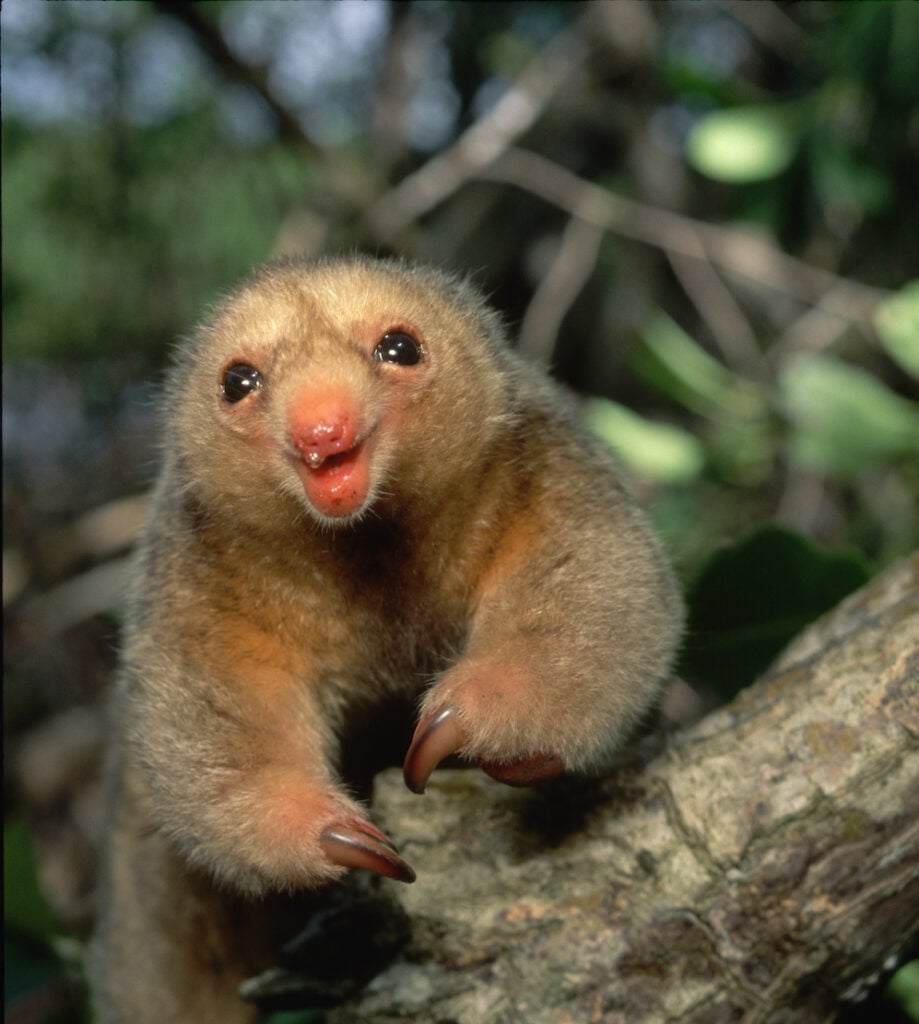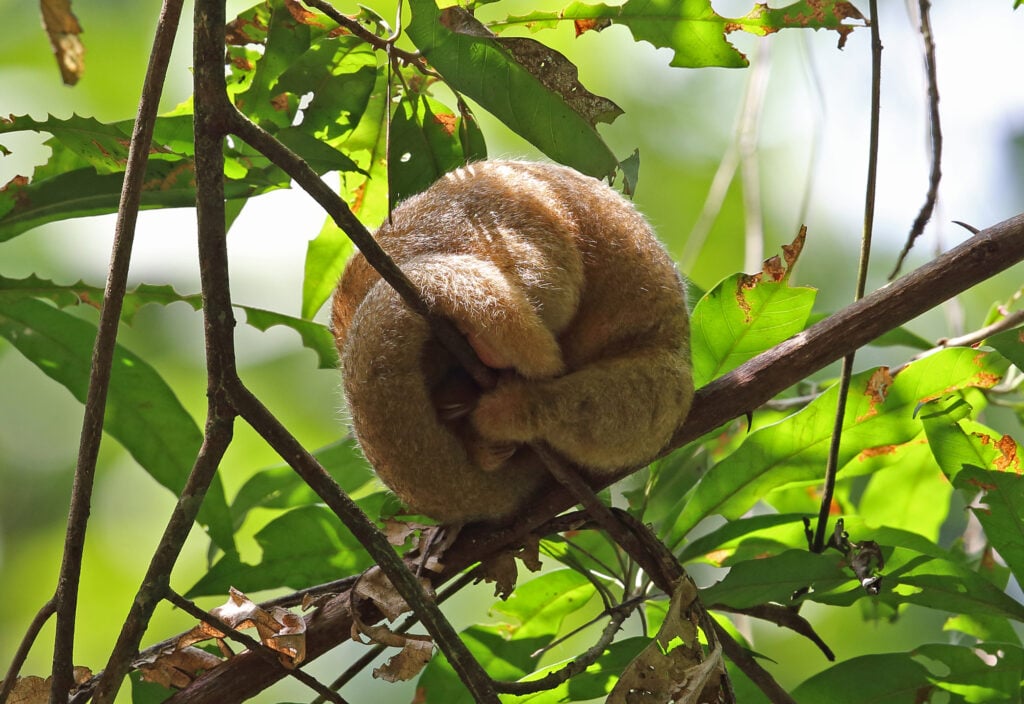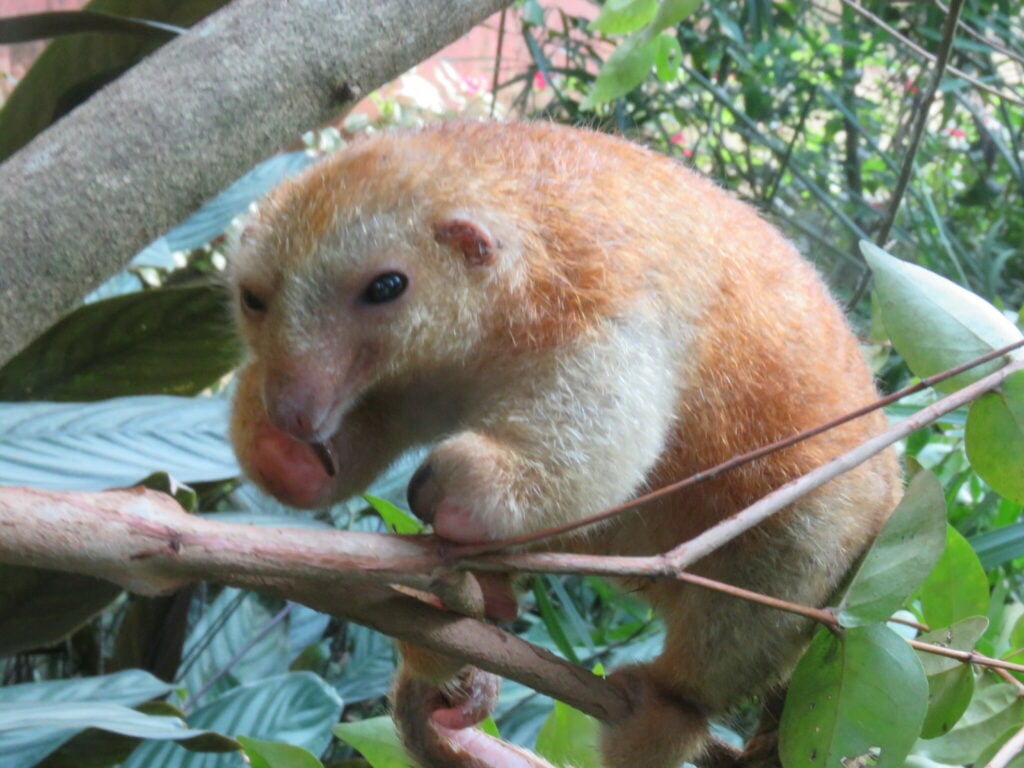The brilliantly named silky anteater is the smallest in the world, weighing in at an average of 10 ounces. Found in Central and South America, they live in the trees and eat up to 5,000 ants a day. But don’t let their diminutive size and cute looks fool you – these creatures aren’t afraid to put up a fight.

The silky anteater lives in tropical forests across Mexico, Ecuador, northern Peru, Bolivia, and Brazil.
Though scientists initially thought they were all one species, there are now believed to be seven distinct kinds of silky anteater. Subtle differences in the animals’ fur color are what initially tipped scientists off that there may be variation within the species, and this was confirmed by both DNA of living anteaters, and specimens found in museums.
They are nocturnal and arboreal, meaning they live up in the trees of the rainforest and can eat and move homes without descending to the ground. As the name suggests, the diet consists primarily of ants, which they can consume in the thousands, though they have also been known to eat termites and fruit while in captivity.

The main threat to silky anteaters comes from the sky. Hawks and eagles are their main predators, and they use camouflage to try and avoid being attacked. If they are, however, the silky anteater is known for its boxing-like defense techniques.
Read More: The giant technicolor squirrels living in the forests of India
It uses its long tail (often longer than its body) to anchor itself onto a branch. From here, it stands up, raises its claws up to its face, and strikes back.
Brave as this may be, the comparative size of the silky anteater ensures its best chance of survival is to go undetected. They weigh between 6.2 and 14.1 oz (175 to 400 grams) and are 14 to 18 inches long (36 to 45 cm). That long tail that they use for balance, climbing and defense, ranges from 6.7 to 9.4 inches (17 to 24 cm) in length.

Solitary, slow-moving creatures, they give birth to a single offspring at a time, either once or twice a year. Their lifespan in the wild is usually under two years, but they can live longer than that in captivity. Without teeth, the silky anteater uses its sticky tongue to slurp the thousands of insects.
Despite their common name, the silky anteater is not classified in the same family as the giant anteater, or its smaller cousin, the tamandus. These two fall into the Myrmecophagidae family, which literally translates as “ant-eating” in Latin. The silky anteater is the lone member of a family called Cyclopedidae. Together, these two families constitute the anteater suborder, Vermilingua – or “worm-tongue” in Latin.
Silky anteaters are related to another slow-moving, arboreal animal in the area: the sloth. Like the famous sloth, they wrap themselves around branches and hoover up insects, so it is perhaps no surprise that they share ancestry.
It is most likely that their cute nickname comes from the silk trees they often inhabit.





